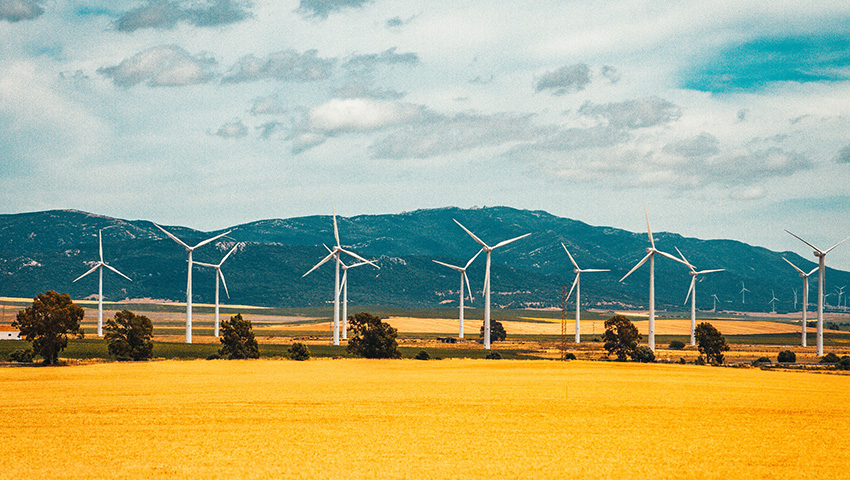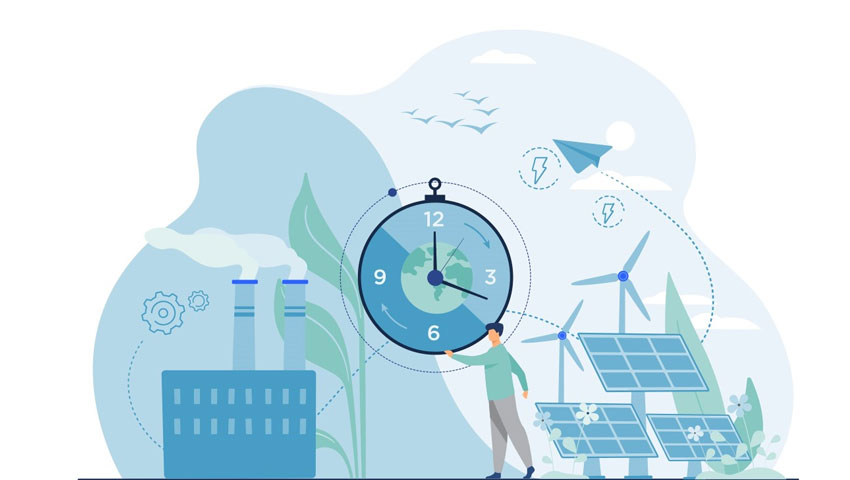Explainer: What are Power Purchasing Agreements (PPAs)?

The energy transition has serious ambition in Europe as we target 605 GW of renewable capacity additions by 2030. This ambition, however, needs to be seasoned with some realism. In our latest flagship study, Decarbonisation Speedways, our REPowerEU-inspired scenario calls for the right enabling factors to make the ambition realistic.
One of these enablers is a market design that provides the right incentives and instruments to invest in the energy transition. Since the European Commission tabled its proposal for a reform of the European electricity market, there has been a widespread discussion on the need to enhance long-term instruments to shield consumers from the volatile energy prices of the spot market and reassure investors with predictable price signals. Capacity remuneration mechanisms and contracts for difference (CfDs) are the oftencited means to that end. Nonetheless, there remains another heavyweight – the power purchase agreement (PPA) – which can help get the job done.
But what are they, how do they work and how are they different from other long-term contracts?
What is a PPA?
Power purchase agreements, often referred to in short form as PPAs, are long-term contracts between a supplier and buyer of electricity. The energy provider is generally an electricity generator, and the buyer is often a utility. More and more, however, electro-intensive industries and other corporates have been signing up to the agreements too.
A PPA includes all the terms of the agreement, such as the amount of electricity to be supplied, the negotiated price, who bears what risks, the required accounting, and the penalties if the contract is not honored. As it is a bilateral agreement, a PPA can be adapted to the wishes of the parties involved, so the supply contract can take many forms.
This is a transformative instrument for the energy transition. Through such contracts, renewable project developers have access to finance to deploy new renewable energy sources, while the other party gains access to stable renewable electricity supply at a predictable price. How does a PPA accomplish this?
How does a PPA work?
Simply put, the buyer and the energy provider or generator come together to negotiate a price at which the provider will sell electricity to the energy user, and the volume of electricity to purchase from the generator at that price point. This is in place of leaving the sale and sourcing of power to the spot market where prices are subject to volatility – especially over the past year.
Why are PPAs important?
Power purchasing agreements boast several benefits to market players and investors, turning them into a crucial instrument for a number of European energy objectives.
Price stability and long-term visibility

By guaranteeing a price – or a price range – the generator knows what they will receive for the electricity they generate thereby making the business case for the project become more sustainable thanks to higher and clearer visibility over their returns. Furthermore, as the PPA often stipulates the volume of electricity involved, the customer also secures stability as they can guarantee the amount of electricity they source from the generator and how much it will cost them.
This dynamic is what makes the PPA attractive. Both parties are incentivised to enter the contract through its mutual beneficiality. Utilities or other customers are encouraged to seek out a power purchasing agreement for price stability reasons while suppliers have the PPA option at hand to help them lock in consistent revenues and deliver a clear return on their project.
Reduced market volatility

A PPA’s negotiated price helps lock in a stable, predictable price that allows buyers and generators to hedge against volatile prices. Generally, a PPA extends ten or fifteen years. This helps reduce the risk of fluctuations in the electricity markets, which is desirable for large, debt-financed projects such as wind and solar farms. PPAs are also concluded for the continued operation of renewable energy installations when they no longer receive subsidies.
In the context of potential future energy crises, long-term contacts can prove useful in shielding energy consumers from price spikes and excessive exposure to the spot market. It is therefore essential that the electricity market reform enhances access to PPAs by removing all unjustified barriers, allowing all consumers to sign long-term PPAs and standardising this instrument while simplifying and improving accounting obligations.
Renewables booster

A PPA can spur renewables deployment as generators will be more willing to develop the projects if they know there are buyers out there looking for PPAs to sign. Given the EU’s 605 GW renewable energy capacity addition target by 2030, these instruments can significantly contribute to reaching such ambitious goal by fostering the development of new renewable projects, all the while providing more energy security to European households and businesses.
Finally, these instruments contribute to the reduction of emissions in the energy sector, by helping companies decarbonise their operations, and achieve their and the continent’s, sustainability objectives.
What’s the difference between a PPA and a CfD?
Unlike PPAs which are much more energy-specific contracts, contracts for difference (CfDs) are a more general financial instrument that has also been applied to electricity sourcing. Like a PPA, CfDs are long-term contracts. However, CfDs include a subsidy model whereby a “strike price” is agreed by the counterparties for a certain volume of electricity. If the market price for electricity rises above the strike price, the provider pays their counterparty the difference, while if it goes lower, the energy buyer pays the counterparty the difference.
In this way both positive and negative deviations from the fixed reference price are paid out to the contractual partner. Contract for difference is also called symmetrical market premium. This subsidy model defines a fixed minimum remuneration per MWh of electricity. The level of this subsidy rate is usually determined by a tender procedure and is usually granted for a defined period such as 20 years. This differs from a PPA, as the negotiated price in the contract, is the price that will be paid no matter what the price of electricity is on the spot market.
Moreover, in a contract for difference the counterparty to the generator is not necessarily the buyer of electricity. During last year;s energy crisis, public CfDs have often made headlines, in which the State would be the counterparty to help stabilise prices, reduce volatility, and in a way act, as the financier of new renewable projects. Meanwhile, as we have seen, PPAs are most often contracts between the buyers of electricity and those who generate it.
Are there different types of PPAs?
There are myriad types of PPAs and given the rather novel nature of the agreements, different types of contracts are being developed all the time. These contracts can be categorised based on who the buyer is, the nature of the electricity delivery and even the granularity of when the electricity was generated. Most commonly, they vary based on who the contractual parties are. Here are the most common ones:
-
Corporate
These are agreements between a corporate buyer and generator. The corporate agrees to purchase a certain amount of electricity from the generator for a fixed period of time. This is a way for corporations to hedge against rising electricity prices and to meet their sustainability goals. -
Municipal
These are similar to corporate PPAs, but they are between a municipality and the provider. Municipalities often use PPAs to reduce their reliance on fossil fuels and to support local renewable energy projects. -
Community
These are agreements between a community and a generator. The community agrees to purchase a certain amount of electricity from the energy provider, and the latter agrees to provide educational or other benefits to the community. Community PPAs are a way for communities to get involved in the energy transition and to benefit from local renewable energy projects. -
Retail
These are agreements between a retailer and a generator. The retailer agrees to purchase a certain amount of electricity from the energy provider and then resells it to its customers. Retail PPAs are a way for consumers to get access to renewable energy without having to install their own solar panels or wind turbines. -
Utility
These are agreements between a utility and a renewable developer. The utility agrees to purchase a certain amount of electricity from the developer for a set period. The price of electricity is typically fixed, which provides the renewable energy developer with financial certainty. -
Financing
These are agreements between a financial institution and a renewable energy project developer. The financial institution provides financing for the project, and the developer agrees in exchange to sell a certain amount of electricity to the financial institution. Financing PPAs are a way for renewable projects to get the financing they need to get built.
Delivery variations
Beyond the parties involved in the PPA, the delivery of electricity is a very important categorisation as well. Delivery can be arranged in several ways to suit individual customers’ situations, including:
-
On-site:
This type is often used for small-scale projects to generate electricity directly on-site for the energy user to power their facility. This can be done for instance with rooftop solar panels. -
Off-site:
Contrary to the on-site PPA, this is where the provide generates electricity away from the customer’s facility and delivers the electricity generated via transmission lines to the energy user. This is usually the preferable contract for large-scale renewable installations as more space is needed to deliver higher capacities. -
Physical delivery:
This kind of agreement is when the electricity generated is delivered for use by the buyer. PPAs are in fact not always contracted for delivering physical electricity, as the next variation shows. -
Virtual (VPPA):
This is a financial instrument whereby the buyer purchases the attributes of the renewable electricity, much like a carbon offset, with no physical delivery of electricity involved. -
Block delivery:
With this contract, consumers are not obliged to buy all the electricity generated by the provider all the time. In this case, the PPA stipulates the amount of electricity the buyer will off-take from the generator, allowing the former to hedge against the variable generation that may result from renewables while the provider still receives a stable stream of revenue from their project.
Within these contracts themselves there can also be differences. Private wire PPAs connect projects directly with the customer, while some providers may prefer connecting to the grid to sell to multiple customers. Some PPAs may take place across borders while others are simply off-takes from subsidiary companies under the same parent.
As mentioned, PPAs are relatively new, and new ways to structure them are being developed all the time. This is particularly true as our digital capabilities increase and especially with the help of artificial intelligence (AI) which is making more granular PPAs a possibility.
What are granular PPAs?
When we talk about granularity, we refer to the timescale on which the PPA is based. Generally, PPAs are based on an annual timescale. This means that over the course of a year, a customer buys a certain volume of electricity from a generator. It is a useful system that requires simple accounting to confirm that the agreed volume of electricity was supplied and consumed by the counterparties over the course of said year.
However, as energy users and especially corporates, increasingly seek out PPAs for their green credentials and to decarbonise their operations, this type of contract does not actually guarantee 100% decarbonisation due to is annual basis. If at any time the supplier’s asset is not generating renewable electricity – because the wind isn’t blowing or the sun isn’t shining, the energy provider may have to make up a shortfall in electricity by providing it from the spot market, which is likely to be generated with fossil fuels. This is where the benefits of granularity come into the picture.
With the help of digitalisation, it is now possible to issue guarantees of origin (GOs) that can certify that a certain amount of generated electricity is renewable on an hourly timescale. These GOs are used to provide a more granular accounting of electricity generation, thus enabling the so-called 24/7 PPAs. Through these more granular types of contracts, the parties can exchange hourly GOs to guarantee that every hour of electricity consumed by the energy user is generated with renewable energy. This removes any concern that the company trying to decarbonise their operations may have actually been relying on fossil generation and lends credence to their decarbonisation efforts.
These kinds of PPAs are the future of grid decarbonisation and our 24/7 Hub is deeply involved in bringing them into the mainstream.

What was the impact of Europe’s energy crisis on the PPAs market?
Despite the benefits of PPAs and especially their ability to hedge against price volatility, the total PPA volume signed in 2022 actually suffered due to the energy crisis.
Based on data from Pexapark, the total market for PPAs in Europe lost 21% of contracted capacity in 2022 from the year before, with the capacity of utility PPAs falling 75% year on year. But that doesn’t give the full picture.
In fact, despite the total capacity of utility PPAs falling, corporate PPAs saw a surge of 20% with a greater number of deals being signed than the year before. This is no doubt thanks to the price-hedging benefits of these contracts in a time of uncertainty for businesses.
How can we enhance the development of power purchasing agreements?
Given their untapped potential for Europe’s energy transition, ensuring these contracts have a smooth road to be utilised as much as possible is key. As Europe mulls over the reform of the electricity market design, Eurelectric has called for specific actions that can help make this happen.
As detailed in our Electricity Market Design Fit for Net Zero report, PPAs are lauded as instruments to help incentivise investment in low-carbon and renewable energy sources. It is therefore crucial to keep them in the basket of available instruments for investors to use when engaging with energy providers, generators and developers.
More specifically, Eurelectric calls for a private framework that would aim at removing barriers to PPAs and improving transparency and standardisation. In this way, we would be unlocking one of the key enablers to decarbonisation, keeping us on target with the REPowerEU-inspired scenario. All through the power of purchasing.
Do you want to know more?
Read our full report on a Market Design Fit for Net-zero and check out our latest event on "Electricity Market Design for the Energy Trilemma" from our Power Summit 2023 - Balance of Power.
